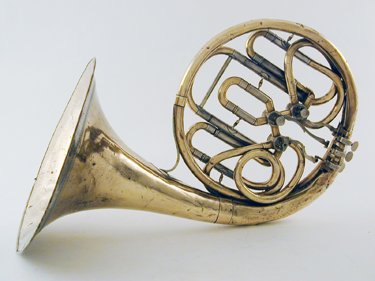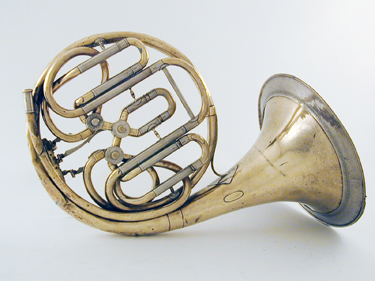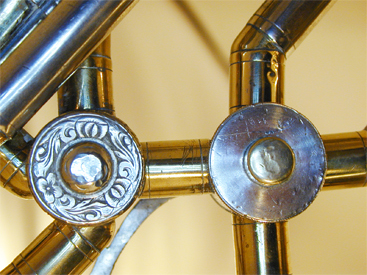The arrangement of rotary valves in a triangular pattern was not uncommon among horn makers in Bohemia and the vicinity of Vienna as an alternative to the Vienese pumpen valves. This innovation was no doubt an attempt to reduce the "acoustic resistance" due to the sharp angles of tubing found in the valve clusters of the Vienna horn and in-line rotary valves. Other examples of triangular valve arrangement are known by Josef Müller, Prague; Leopold Uhlmann, Jr., Vienna; Josef Glassl, Graslitz; Jos. Fotter, Mladá Boleslav, Bohemia, Friedrich Gessner, and Anton Holý. The modern Czech firm, M.Jiracek a Synove, makes a similar Double Horn (Model Nr.101 "Supin") in F and B♭ with four rotary valves arranged in a square. "This unique design allows the airstream to pass through the valves unidirectionally - with acoustic resistance reduced incredibly." |
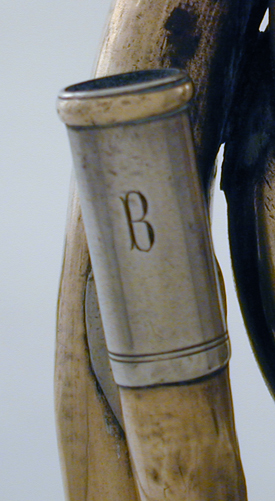 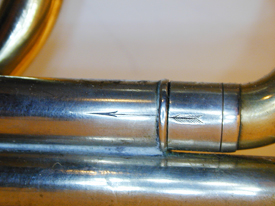 The valve slides and tubes are marked with arrows (bottom photo) showing the correct orientation of the slides as set at the factory. |
The horn player shown at right was a member of the Molé Chamber Music Club in Boston. He is probably Franz Hain who succeeded Albert Hackebarth as the Club's horn player, and is holding a triangluar pattern single horn very similar to the subject horn by Josef Wolf. |
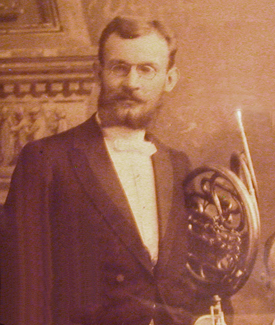 |
|
|
|
